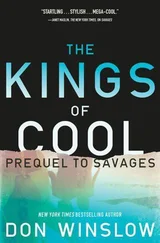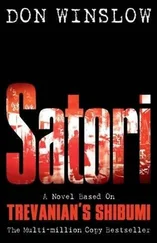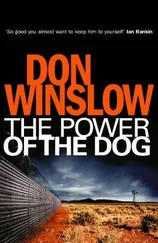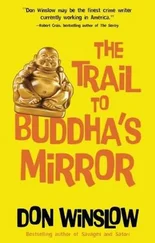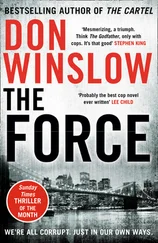Mullen smiles. “Any other epiphanies, Art?”
“Yeah,” Keller says. “We can’t answer the question of why people do drugs. But we do know why people deal them. Very simple—money.”
“So?”
“So if we really want to do something, we go after the money,” Keller says. “And I don’t mean down in Mexico.”
“You know what you’re talking about here.”
“Yeah, I do,” Keller says. “And I’m ready to go there. I guess the question is, are you?”
Keller knows what he’s asking of the man.
It’s a potentially career-ending move.
You go after junkies and street dealers, they don’t have a way to fight back. You attack the centers of power, they have more than enough ways of fighting back.
They can bury you.
Mullen doesn’t look scared.
“Only if you’re going to go all the way,” he says. “I’m not interested in sending a few patsies to Club Fed for a few years. But if you’re going to take this wherever it goes, then … what do you need?”
A banker, Keller tells him.
A Wall Street banker.
On the train back, Hidalgo has another burger and tells Keller that actually it isn’t so bad.
“That’s good,” Keller says.
Because you’re going to be spending a lot more time on the Acela.
It’s the start of Operation Agitator.
Heroin reminds Ric of Easter.
The poppies shimmer vibrant purple in the sunlight, and the flowers that aren’t purple are pink, red and yellow. Set against the emerald-green stalks, they look like candy baskets.
The plane banks hard against the Sierra Madre del Sur as it angles for its landing at a private airstrip outside the Guerrero town of Tristeza. Ric’s father has brought him here as sort of a tutorial, “to learn the business from the ground up, as it were.” It’s part of his ongoing “Your Generation” lecture series, along the lines of “Your generation is separated from the soil that has made you all rich.”
As if, Ric thinks, my lawyer father spent a single day in the fields. His closest brush with being a campesino was a thankfully brief attempt to grow tomatoes in the backyard that ended in a declaration that it was more “economically efficient” to buy them at the market, notwithstanding a previous installment in the lecture series entitled “Your Generation Doesn’t Know Where Its Food Comes From.”
Yes, we do, Ric thinks.
Calimax.
The plane lands with a hard bounce.
Ric sees the Jeeps full of armed men beside the airstrip, waiting to take them up the winding dirt roads into the mountains. A convoy is necessary because this part of Guerrero is increasingly “bandit country,” relatively new to the Sinaloa cartel.
The cartel’s fields in Sinaloa and Durango can’t keep up with the growing demand for heroin, so the cartel has expanded into Guerrero and Michoacán.
Both states are producing more and more opium paste, Ric knows. The problem is that the infrastructure hasn’t yet caught up to the production and they have to rely on smaller organizations as middlemen between the growers and the cartel.
Not a bad thing in itself, if the middlemen weren’t at war with each other. So this beautiful country, Ric thinks as the Jeep passes through stands of tall ocote pines, is rife with gunmen on the hunt for one another.
First there are the Knights Templar, mostly in Michoacán, the survivors of the old La Familia organization, still possessed (and that is the word, Ric thinks) with a crazy quasi-religious zeal to eradicate “evildoers.” Sinaloa tolerated them as long as they were helping to fight the Zetas, but now their utility is fast coming to an end and they’re more trouble than they’re worth. Especially as these “do-gooders” are heavily involved in meth, extortion and murder for hire.
The Knights insist on fighting Los Guerreros Unidos, a splinter group of the Tapia organization founded by the old Tapia gunman Eddie Ruiz, now residing in an American penitentiary.
Ruiz was the first American to be the head of a Mexican cartel. Ric met him once or twice as a kid, but mostly knows him from the famous YouTube videos when “Crazy Eddie” filmed himself interviewing four Zetas before he executed them. Then he sent the tapes to all the television stations and put the clip out on the internet.
It started a trend.
Now “Eddie’s Boys,” as Guerreros Unidos are sometimes known, are running amok in Guerrero, Morelos and Edoméx, killing rivals, kidnapping for profit, extorting businesses and just generally being a pain in the ass.
We can’t step on them because we need them, Núñez has told Ric. Especially here in Guerrero, where they control Tristeza. A city of about a hundred thousand people, Tristeza has importance beyond its size because it sits on the crossroads of several highways, including the all-important interstate down to Acapulco. The mayor of Tristeza is a longtime member of GU, and we need, at least for the time being, to stay in her good graces.
GU has a blood feud with Los Rojos, yet another splinter group of the Tapia organization, which, it should be fairly noted, was itself a splinter group of the Sinaloa cartel.
“The conflict is over smuggling routes,” Núñez explained, “but when you really analyze it, what they’re fighting over is us. It’s a flaw in the system that we set up, and Adán was too busy fighting the Zetas to repair it, and since his death, it’s only gotten worse.”
The Sinaloa cartel, Ric has learned, doesn’t actually own heroin farms in Guerrero. Most of them are just a few acres large, tucked away deep in the mountains, and are owned by small farmers who harvest the poppy and then sell the opium gum to middlemen, such as GU and Los Rojos, who transport it north—mostly hidden on commercial buses out of Tristeza to Acapulco and then to labs in Sinaloa or closer to the American border.
So they’re killing each other, Ric thinks, his breath getting tight as they climb up past the ten-thousand-foot mark, for the right to sell to us.
Then there’s his old friend Damien Tapia.
Now glossing himself the Young Wolf and making himself another pain in Sinaloa’s ass.
Damien has reassembled some of his father’s old loyalists and started to sell cocaine and methamphetamine in Culiacán, Badiraguato, Mazatlán, and even Acapulco, where he’s reportedly based, protected by some of Ruiz’s former people, extorting bars and nightclubs. There are rumors that he’s been spotted in Durango and here in Guerrero, and, if that’s the case, he’s going to try to get into the heroin market as well.
“Such a nice young man,” Núñez had said about Damien. “It was a shame that his father went insane and had to be put down like a mad dog.”
The convoy comes into a sharp curve and Ric sees a flash of color ahead—hidden behind a stand of tall pines on a steep slope are the bright blooms of the poppy. He can see and smell the charred stumps where the farmer burned down the trees to create land for opium cultivation.
The field is maybe only two acres, but Núñez tells his son not to be deceived. “A well-irrigated, skillfully tended acre in Guerrero can yield as much as eight kilos of opium sap in a season, which is enough to produce a kilo of raw heroin.
“Just last year,” he says, “that kilo of sap sold for about seven hundred dollars; already the price has doubled to fifteen hundred dollars as demand has grown, and we’ve only managed to keep the price that low by being the sole buyer, Walmart, if you will.
“This farmer might have as many as eight to ten of these patches scattered around the mountainside, hidden from the army helicopters that patrol the terrain in order to spray herbicides. At three thousand dollars a patch, you’re starting to talk real money.”
Читать дальше



